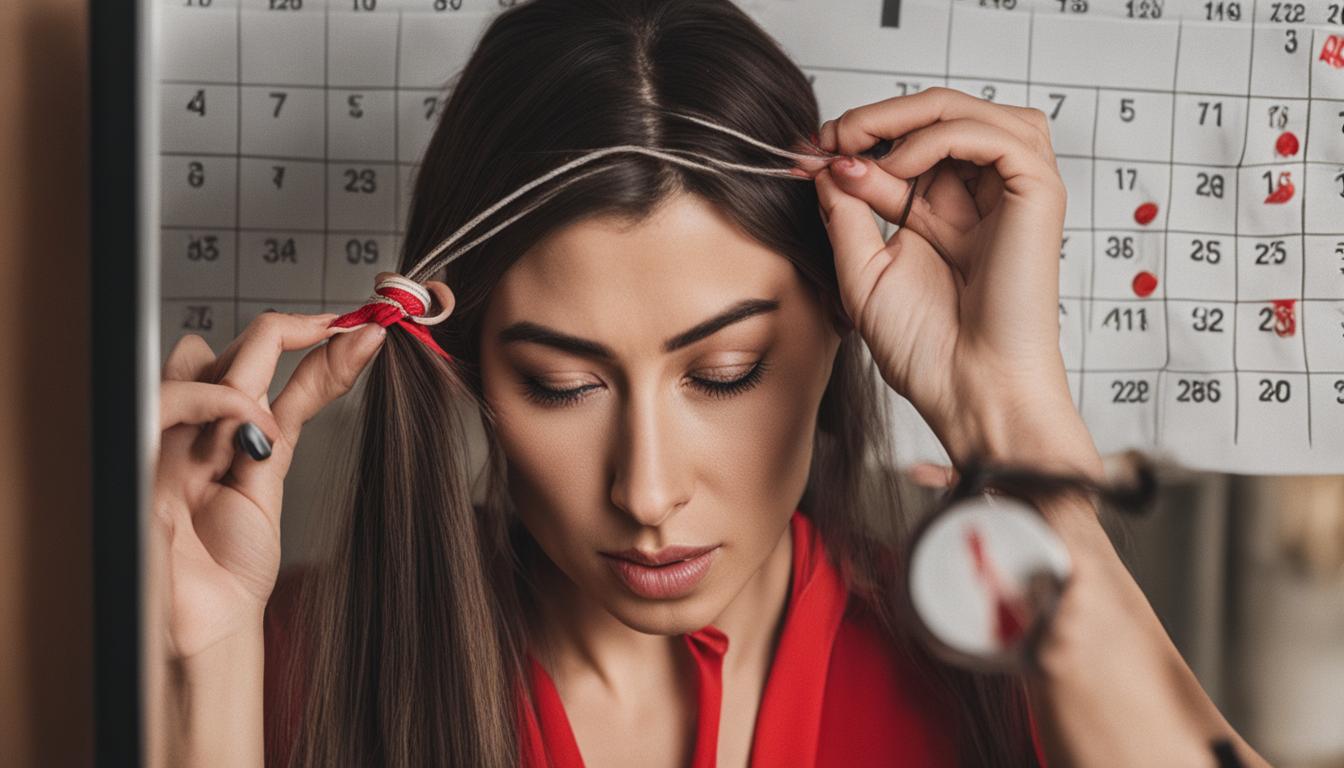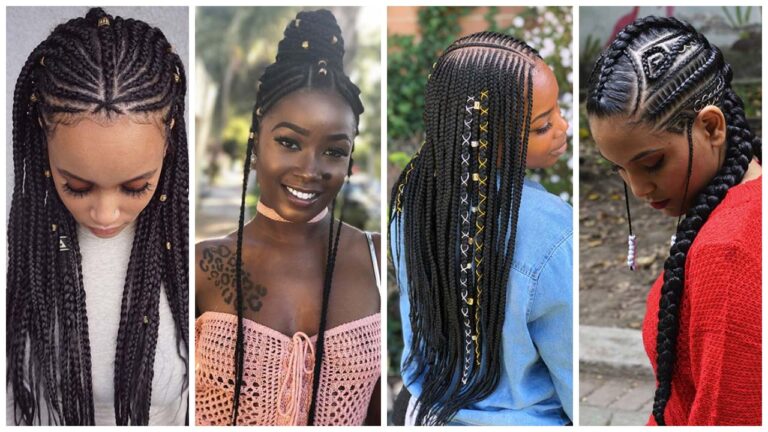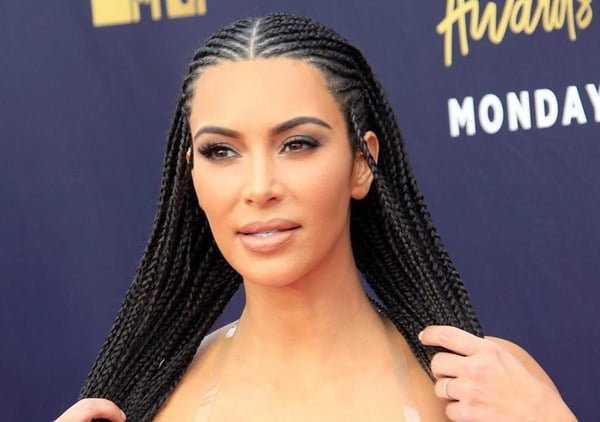Is it bad to tie your hair every day?
Tying your hair every day may seem like a harmless habit, but it can actually have negative effects on your hair health. The constant tension and strain from tight hairstyles can lead to hair damage, breakage, and even hair loss over time. It’s important to understand the potential consequences of daily hair tying and take steps to care for your hair.
Key Takeaways:
- Tying your hair tightly can cause hair breakage and damage, especially with hairstyles like high ponytails or braids.
- Opting for looser hairstyles and alternative hair accessories can minimize the risk of hair breakage.
- Maintaining overall hair health is crucial to prevent damage and hair loss.
- Avoiding excessive heat styling, chemical treatments, and hair pulling can help preserve hair health.
- Certain hair care practices, such as brushing wet hair or blow-drying on high heat, can contribute to hair damage.
The Impact of Tying Hair Tight
When it comes to styling our hair, we often opt for tight hairstyles such as high ponytails or braids. However, it’s important to understand the potential impact of tying our hair tight. These hairstyles can put excessive strain on the roots of our hair, leading to breakage and damage.
One of the main culprits for hair breakage is the use of elastic hair bands. These bands can pull on the hair, causing stress and weakening the strands over time. To minimize the risk of breakage, it’s recommended to choose loose hairstyles and alternative hair accessories.
Tying your hair tight can put strain on the roots, leading to hair breakage and damage.
Additionally, it’s essential to be mindful of how often we tie our hair tight. Constantly wearing tight hairstyles can lead to long-term damage and thinning of the hair. By giving our hair a break and opting for looser styles, we can help promote healthier hair that is less prone to breakage.
The Impact of Tight Hairstyles on Hair Health
Research has shown that tight hairstyles can have a significant impact on hair health. A study published in the Journal of the American Academy of Dermatology found that constant tension on the hair follicles from tight hairstyles can result in a condition called traction alopecia. This condition can lead to hair loss and thinning in the areas where the hair is pulled tightly.
- Tight ponytails
- Braids
- Cornrows
- Buns
- Twists
To minimize the risk of traction alopecia and hair breakage, it’s important to choose hairstyles that don’t pull tightly on the hair. Opting for loose ponytails, gentle braids, or leaving the hair down can help alleviate the strain on the hair follicles.
“Constant tension from tight hairstyles can lead to a condition called traction alopecia, causing hair loss and thinning.”
Furthermore, it’s crucial to avoid using tight elastic hair bands that can further contribute to hair damage. Instead, consider using soft fabric hair ties or scrunchies that are gentler on the hair.
By being mindful of the impact of tying hair tight and choosing looser hairstyles, we can promote healthier hair and minimize the risk of hair breakage and damage.
The Importance of Hair Health
When it comes to maintaining healthy hair, there are a few key factors to consider. Proper hair care practices and a focus on hair health can help prevent damage, breakage, and hair loss. By taking the necessary precautions and making mindful choices, you can promote the overall health and strength of your hair.
The Role of Hair Care Practices
One important aspect of maintaining hair health is to be mindful of your hair care practices. Avoiding excessive heat styling, chemical treatments, and tight hairstyles can help prevent damage and breakage. Additionally, using the right tools and accessories, such as a good quality hair brush and gentle hair bands, can further minimize the risk of hair damage. It is also essential to handle wet hair with care, as brushing wet hair can cause breakage. Instead, wait for your hair to dry or use a wide-toothed comb to prevent unnecessary strain on the hair follicles.
Additional Factors Affecting Hair Health
While hair care practices play a significant role in maintaining hair health, there are other lifestyle factors that can impact the condition of your hair. Smoking, for example, can contribute to dull and brittle hair, so quitting or reducing smoking can benefit not only your overall health but also the health of your hair. Excessive use of hair straighteners can also cause damage and breakage, so it is advisable to use heat protectant products and limit the frequency of straightening. Additionally, prolonged sun exposure can lead to hair damage and breakage, so protecting your hair from the sun’s harmful rays is important. Regular hair trims to prevent split ends are also essential for maintaining hair health.
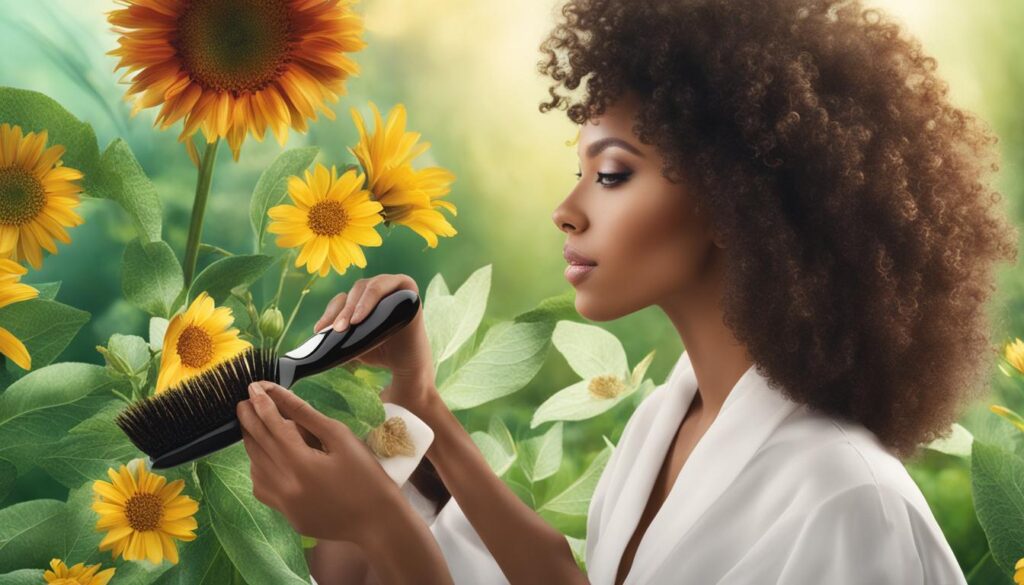
The Importance of Hair Health
Overall, prioritizing hair health is crucial for preventing damage and promoting strong, healthy hair. By adopting gentle hair care practices, being mindful of lifestyle factors, and seeking professional advice when needed, you can help maintain the integrity of your hair and minimize the risk of hair loss and breakage.
The Role of Hair Care Practices
Proper hair care practices play a crucial role in maintaining the health and integrity of your hair. It’s important to be mindful of certain habits and routines that can potentially cause damage and lead to hair breakage. By making small adjustments to your hair care routine, you can protect your hair from unnecessary stress and maintain its overall health.
Brushing Wet Hair: Proceed with Caution
Brushing wet hair may seem like a convenient way to detangle, but it can actually cause more harm than good. Wet hair is more fragile and prone to breakage, so it’s important to handle it with care. Instead of reaching for your regular brush or comb, opt for a wide-toothed comb or a detangling brush specifically designed for wet hair. Start from the ends and work your way up to avoid unnecessary tugging and breakage.
Sleeping with Wet Hair: A Recipe for Frizz
Sleeping with wet hair can lead to frizz, breakage, and even scalp issues. Wet hair is more susceptible to damage, and the friction caused by tossing and turning on a pillow can further exacerbate the problem. To prevent this, allow your hair to air dry or use a diffuser on a low heat setting before bedtime. You can also try loosely braiding your hair or wrapping it in a silk or satin scarf to protect it while you sleep.
Blow-Drying Hair: Less Heat, More Protection
Blow-drying is a common part of many people’s hair care routines, but excessive heat can strip the hair of its natural moisture and leave it dry and brittle. To minimize the potential damage, opt for a lower heat setting on your blow dryer and keep the nozzle at a safe distance from your hair. Towel drying your hair gently before blow-drying can also help reduce the amount of time and heat required. Additionally, using a heat protectant spray can provide an extra layer of defense against heat damage.
Additional Factors Affecting Hair Health
When it comes to maintaining healthy hair, there are several additional factors to consider beyond hairstyles and hair care practices. These factors can also have an impact on the health and appearance of your hair.
Smoking
Smoking not only has detrimental effects on your overall health, but it can also negatively affect your hair. The chemicals in cigarettes can restrict blood flow to the hair follicles, leading to dull, brittle hair that is more prone to breakage and hair loss. Quitting smoking is not only beneficial for your overall well-being but can also improve the health of your hair.
Hair Straighteners
Hair straighteners are a popular styling tool, but excessive use can cause damage to your hair. The high heat from straighteners can strip the hair of its natural moisture, leading to dryness, frizz, and breakage. Using heat protection products and limiting the use of straighteners can help minimize damage and maintain the health of your hair.
Sun Exposure
While sunlight is essential for our overall health, prolonged exposure to the sun can be damaging to our hair. UV rays can penetrate the hair cuticle, causing it to weaken, resulting in dryness, brittleness, and breakage. Protecting your hair from the sun by wearing a hat or using hair products with UV protection can help prevent damage and maintain the health of your hair.
Hair Trims
Regular hair trims are an important part of maintaining healthy hair. Trimming your hair regularly helps to remove split ends and prevent them from traveling up the hair shaft, which can lead to further damage and breakage. Aim to get a trim every 6-8 weeks to keep your hair looking its best.

Understanding Traction Alopecia
When it comes to the health of our hair, it’s important to be aware of the potential risks associated with certain hairstyles. One condition that can result from repeated hair pulling is traction alopecia. Traction alopecia is characterized by hair loss in areas where there is constant tension on the hair follicles. Hairstyles such as high ponytails and braids, which pull tightly on the scalp, are common culprits of this condition.
It’s crucial to recognize the signs of traction alopecia to prevent further hair loss. Some common symptoms include small red bumps, thinning hair, and a receding hairline. If you notice any of these signs, it’s important to make changes to your hairstyles and avoid further damage.
Preventing traction alopecia is key to maintaining healthy hair. Opting for looser hairstyles that don’t place excessive strain on the hair follicles is a good first step. Avoiding the use of elastic or rubber hair bands can also help minimize hair pulling. If traction alopecia does occur, reducing heat and chemical treatments, as well as seeking medical advice for severe cases, can aid in the healing process.
Preventing and Treating Traction Alopecia
Traction alopecia is a condition that can lead to hair loss due to repeated pulling on the hair. It is important to take steps to prevent and treat this condition to maintain healthy hair. Here are some strategies to consider:
- Avoid tight hairstyles: Opt for looser hairstyles that put less strain on the hair follicles. Avoid hairstyles such as high ponytails and braids that pull the hair tightly and cause tension.
- Choose suitable hair accessories: Elastic or rubber hair bands can contribute to hair pulling and damage. Instead, use hair accessories that are gentle on the hair, such as fabric hair ties or clips.
- Practice gentle hair care: Reduce the use of heat styling tools and chemical treatments, as they can weaken the hair and make it more prone to breakage. Instead, embrace natural hairstyles and gentle hair care practices.
- Change hairstyles regularly: If you notice signs of traction alopecia, such as hair thinning or bald patches, it may be time to change your hairstyle. Switching to looser styles can help relieve the strain on the hair follicles and promote hair regrowth.
Seeking medical advice
If traction alopecia becomes severe or persists despite lifestyle changes, it is important to seek medical advice. A dermatologist or trichologist can provide further guidance and suggest appropriate treatment options. They may recommend topical treatments, oral medications, or other interventions to promote hair regrowth and restore hair health.
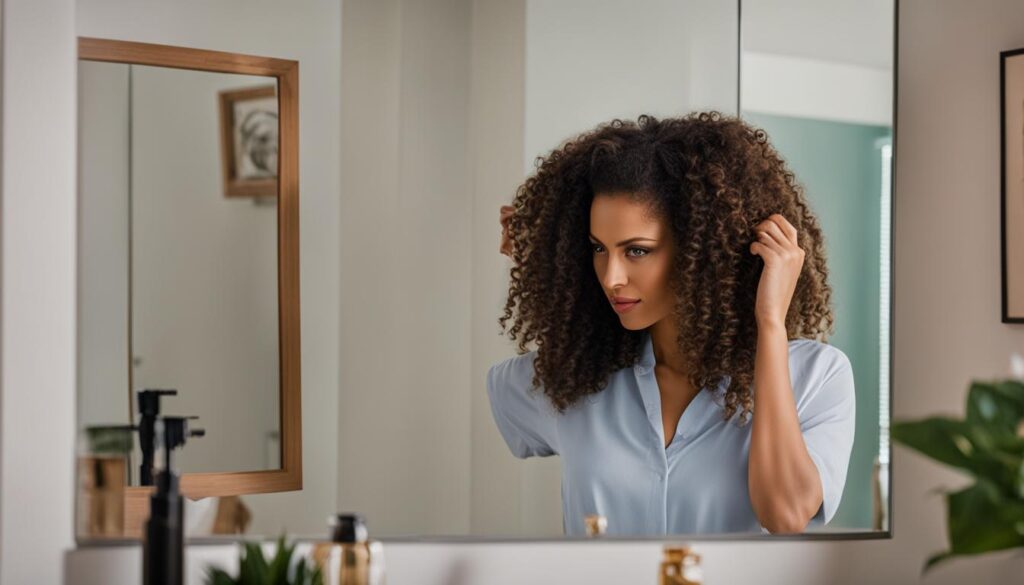
“Prevention is key when it comes to traction alopecia. By being mindful of the hairstyles we choose and adopting gentle hair care practices, we can protect our hair from damage and support its overall health.” – Hair Care Expert
Remember, taking care of your hair and being aware of the potential risks of certain hairstyles and hair care practices can go a long way in preventing and treating traction alopecia. Prioritize hair health and make choices that promote strong, healthy, and beautiful hair.
Conclusion
Tying your hair every day can have negative effects on its health, including hair damage, breakage, and potential hair loss. To maintain hair health, it is important to be mindful of the hairstyles and hair care practices you employ.
Choosing looser hairstyles can help alleviate the strain on your hair and minimize the risk of breakage. Avoiding excessive heat and chemical treatments is also crucial in preventing hair damage. Instead, opt for gentle hair care practices that promote hair health, such as using a wide-toothed comb on wet hair and allowing it to dry naturally.
By taking these preventive measures, you can protect your hair from unnecessary damage and maintain its overall health. Remember, your hair is an important part of your identity, and proper care practices are vital to prevent hair damage and promote healthy hair.
FAQ
Is tying your hair every day bad for it?
Yes, tying your hair every day can have negative effects on its health. It can cause hair damage and breakage, leading to weaker and thinner hair over time. The repeated strain on the hair follicles from tight hairstyles can result in hair loss. It is important to consider the potential consequences of daily hair tying and take steps to maintain hair health.
What is the impact of tying hair tight?
Tying your hair tight can put strain on the roots, leading to hair breakage and damage. This is particularly true for hairstyles that pull the hair tightly, such as high ponytails or braids. Elastic hair bands can also contribute to hair damage. It is recommended to opt for looser hairstyles and alternative hair accessories to minimize the risk of hair breakage.
Why is hair health important?
Maintaining hair health is crucial to prevent damage and hair loss. Healthy hair relies on proper nutrition, adequate sleep, and gentle hair care practices. Avoiding excessive heat styling, chemical treatments, and tight hairstyles can help preserve hair health. Additionally, avoiding habits such as hair pulling can prevent unnecessary strain on the hair follicles.
What are some important hair care practices to consider?
Certain hair care practices can contribute to hair damage. Brushing wet hair can cause breakage, so it is advisable to wait for hair to dry or use a wide-toothed comb. Sleeping with wet hair can lead to breakages and frizz, so it is recommended to let hair dry before bedtime. Blow-drying hair on high heat settings can dehydrate the hair, so using a lower setting or towel drying is preferred. Using a good quality hair brush can also prevent snags and damage.
What additional factors affect hair health?
Smoking has negative effects on overall health, including hair health. It can contribute to dull and brittle hair. Excessive use of hair straighteners can cause damage and breakage. Prolonged sun exposure can lead to hair damage and breakage. Regular hair trims are important to maintain hair health and prevent split ends.
What is traction alopecia?
Traction alopecia is a condition characterized by hair loss caused by repeated pulling on the hair. This can be exacerbated by tight hairstyles that put strain on the hair follicles. Hairstyles such as high ponytails and braids are common culprits. Recognizing the signs and avoiding these hairstyles can help prevent traction alopecia.
How can traction alopecia be prevented and treated?
To prevent traction alopecia, it is important to avoid tight hairstyles and opt for looser alternatives. Avoiding the use of elastic or rubber hair bands can also help minimize pulling and damage. If traction alopecia occurs, changing hairstyles and reducing heat and chemical treatments can aid in the healing process. Seeking medical advice may be necessary for severe cases of traction alopecia.
What is the importance of considering hair health and care practices?
Daily hair tying can have negative effects on hair health, leading to hair damage, breakage, and possible hair loss. It is important to be mindful of the hairstyles and hair care practices used to maintain healthy hair. Choosing looser hairstyles, avoiding excessive heat and chemical treatments, and practicing gentle hair care can help prevent hair damage and promote overall hair health.

